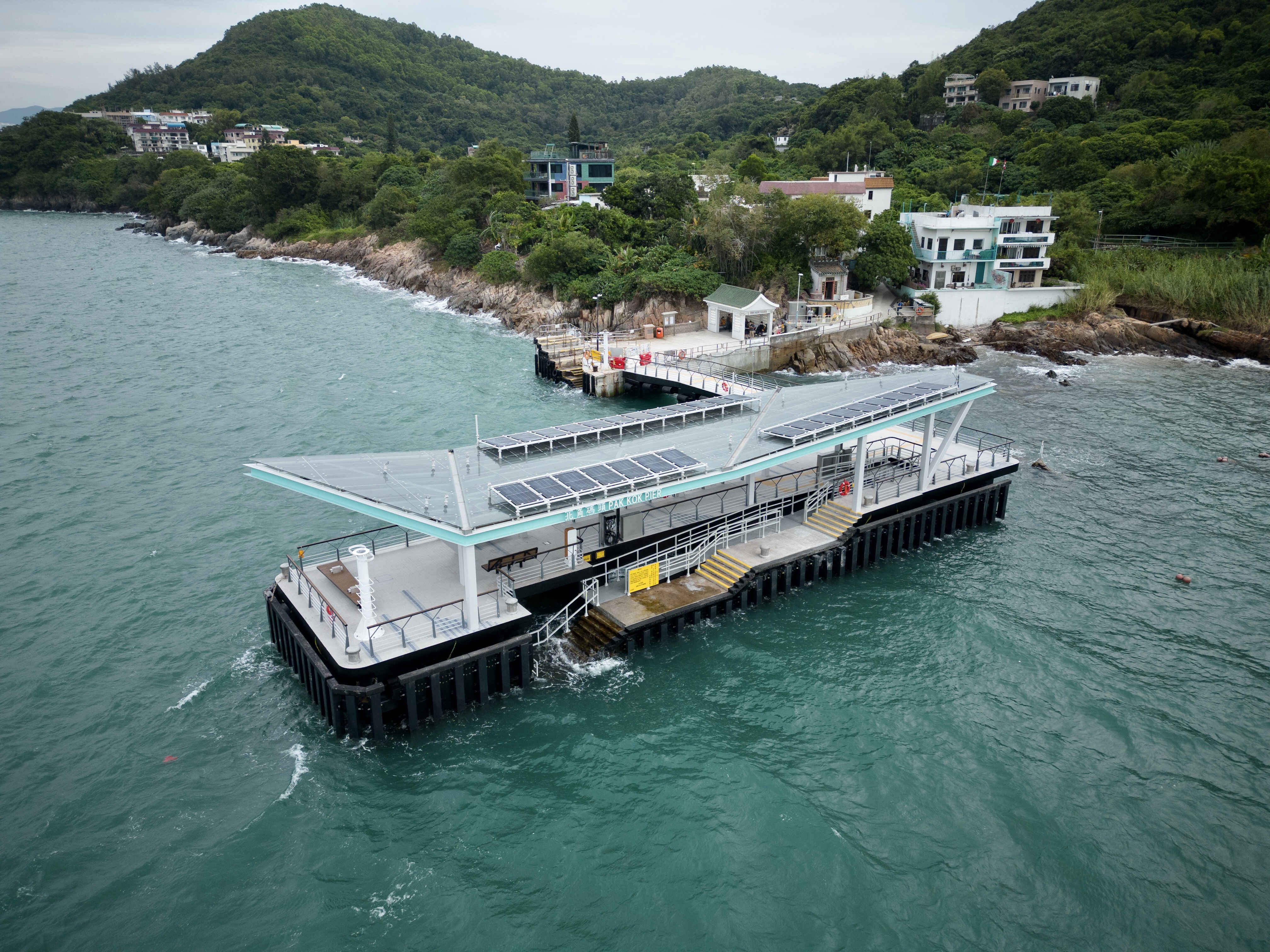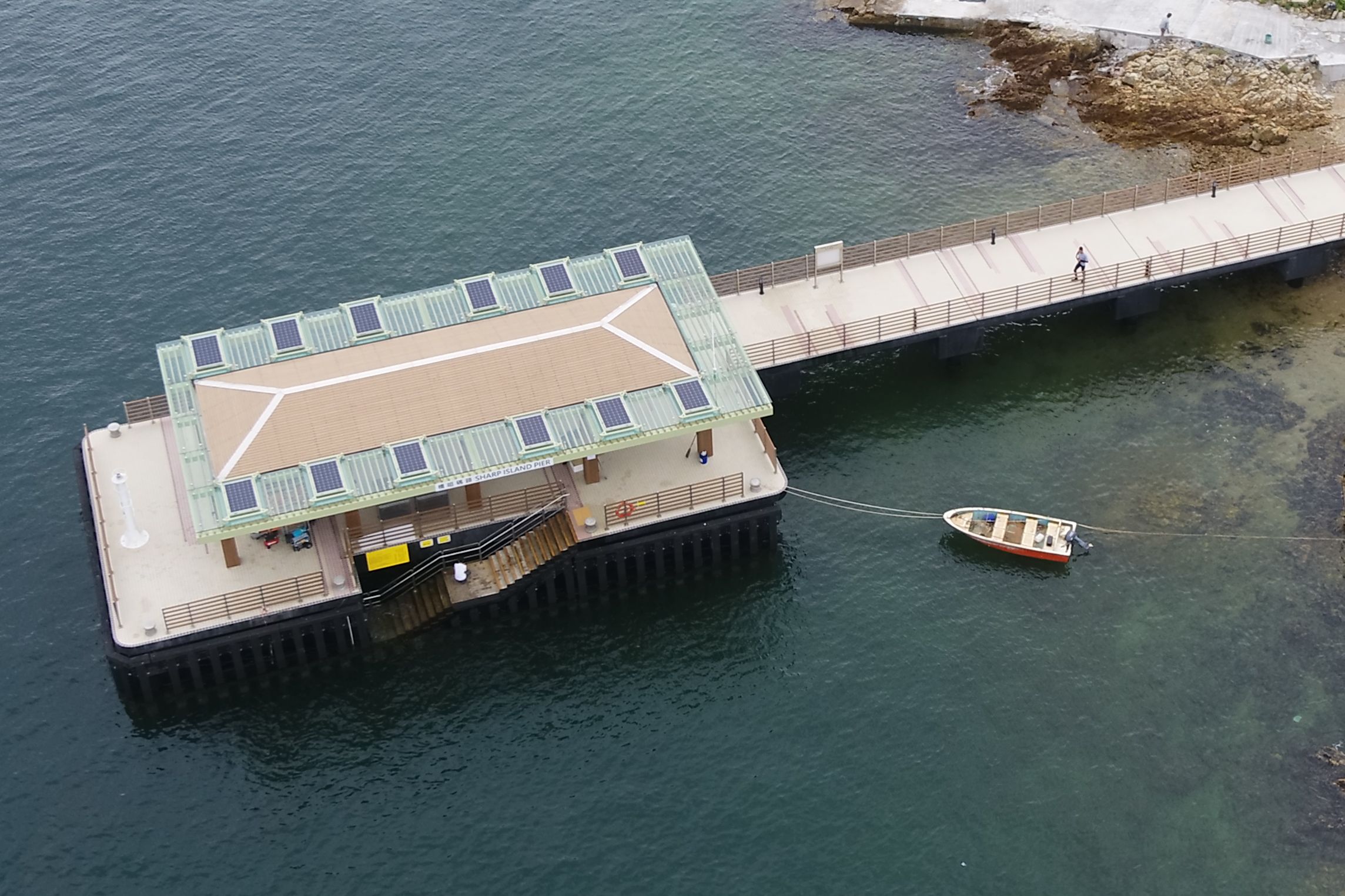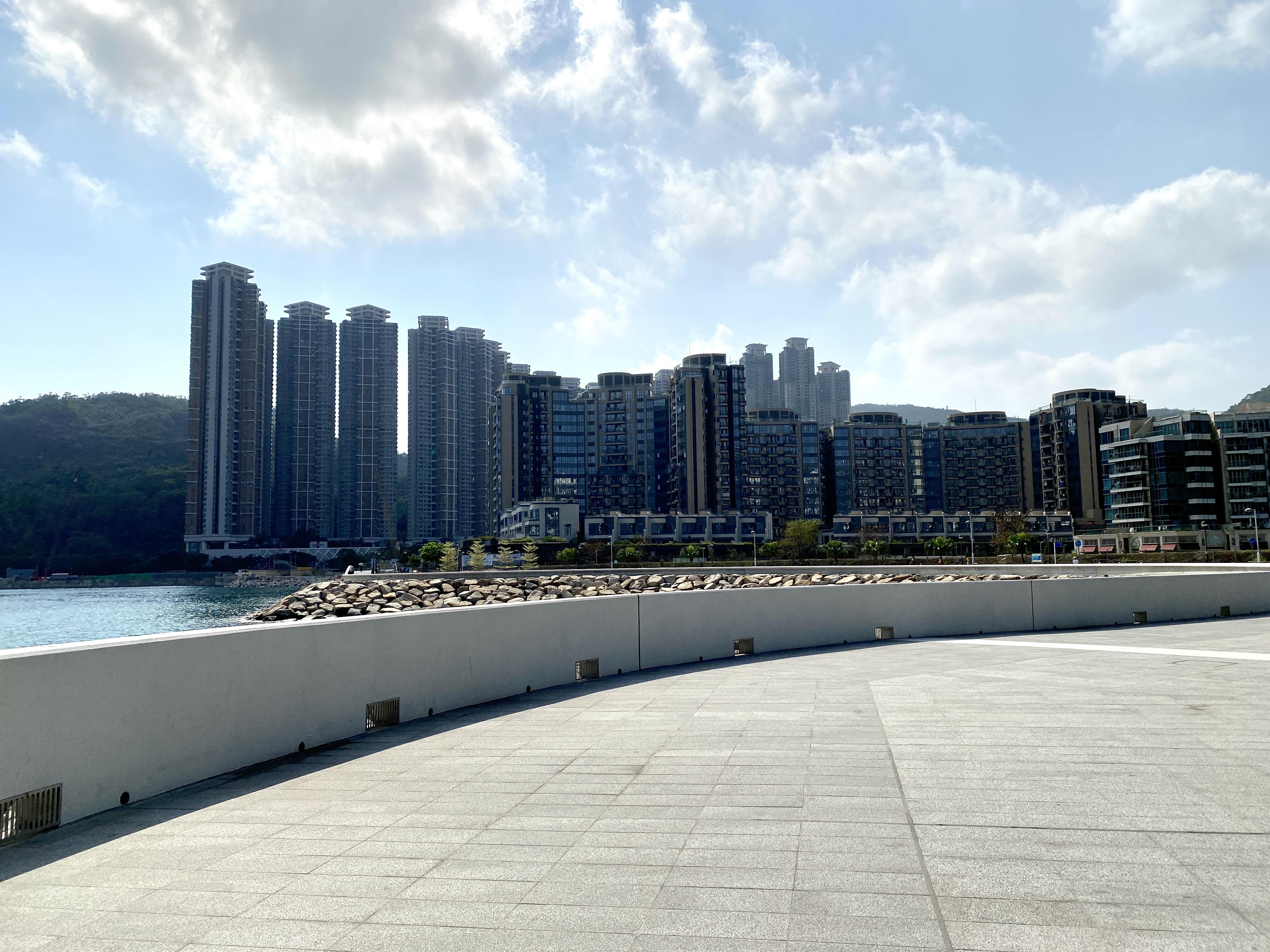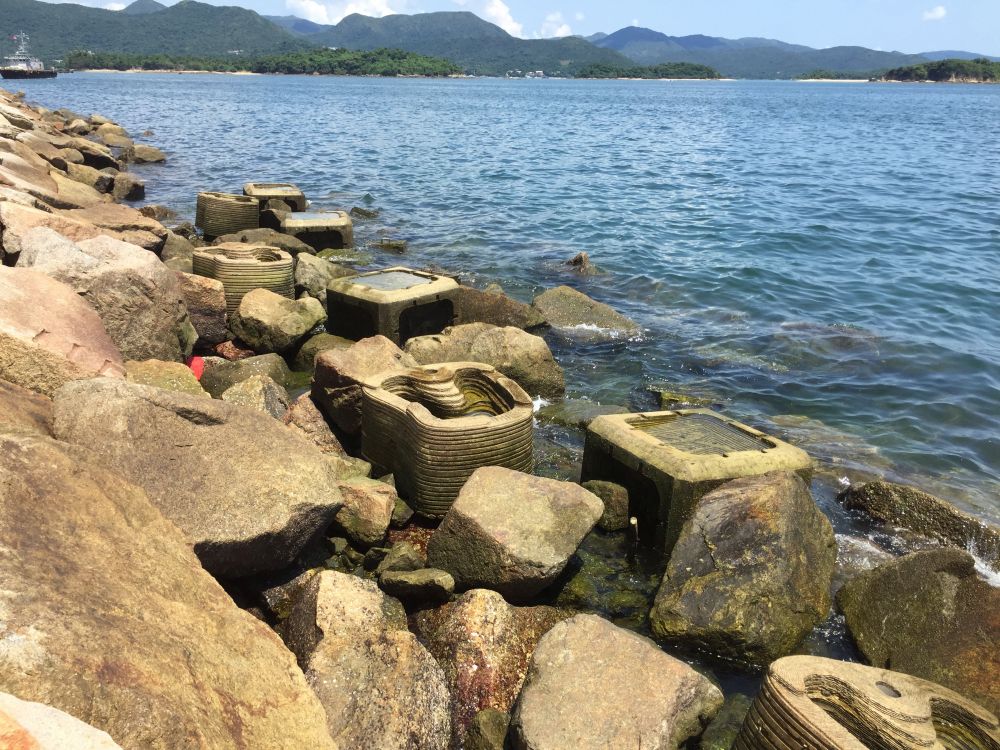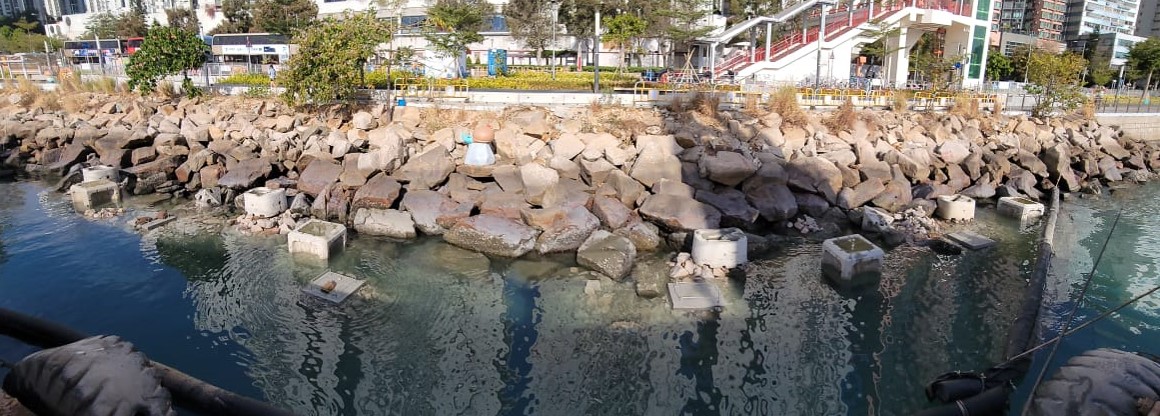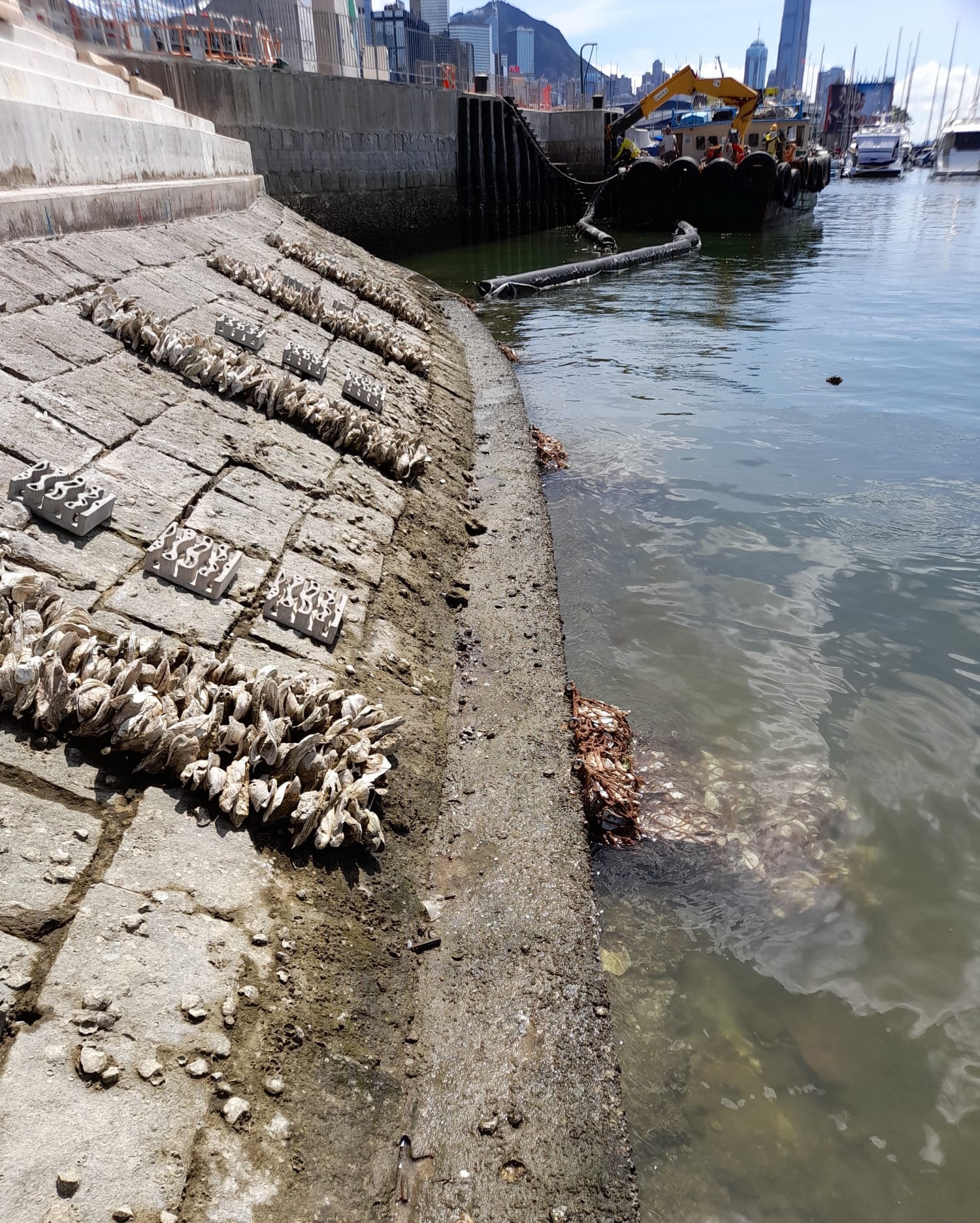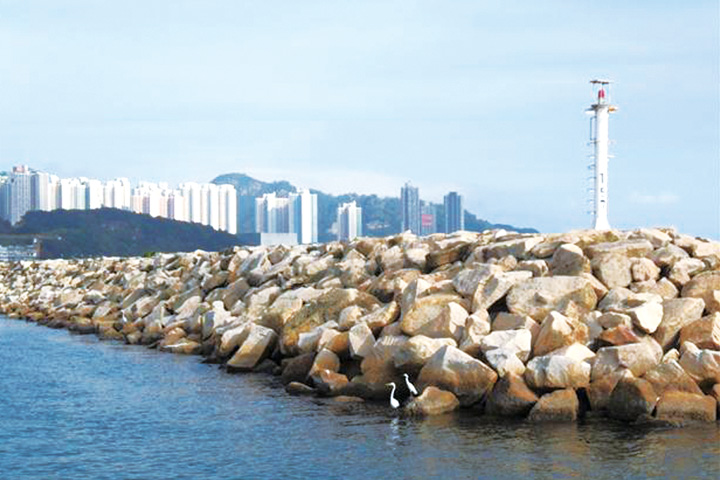Construction of Marine Works
We design and construct various types of marine works, including public piers, waterfront promenades, improvement to existing piers and projects under the Pier Improvement Programme.
We also carry out improvement works to some existing public piers and landing facilities. In the past few years, we completed the construction or reconstruction of the following piers and landing facility:
- Tuen Mun Area 27 Breakwater Public Landing Facility
- Sharp Island Pier
- Pak Kok Pier on Lamma Island
- Landing Facility at Tai Shue Wan
- Kau Sai Village Pier
- Lai Chi Chong Pier
- Leung Shuen Wan Pier
- Sham Chung Pier
- Yi O Pier
- Ma Wan Chung Pier
- Sam Mun Tsai Village Pier
- Shek Tsai Wan Pier
- Yung Shue Wan Public Pier
-
Public landing facilities at Aberdeen South Typhoon Shelter
Other projects completed in the past few years include coastal enhancement works such as wave wall at Tseung Kwan O Waterfront Park, enhancement works at the breakwaters at the Aberdeen South and West Typhoon Shelters, as well as site trials of eco-shoreline on seawalls at Sai Kung, Lung Kwu Tan and Ma Liu Shui, and its application at Tsuen Wan promenade and Causeway Bay Typhoon Shelter.
Climate Change and Its Implications on Coastal Structures
Under the influence of climate change, it is envisaged that the frequency of occurrence of extreme weather events due to temperature increase, sea level rise, more extreme rainfall, tropical cyclone intensity increase and more serious storm surge may increase.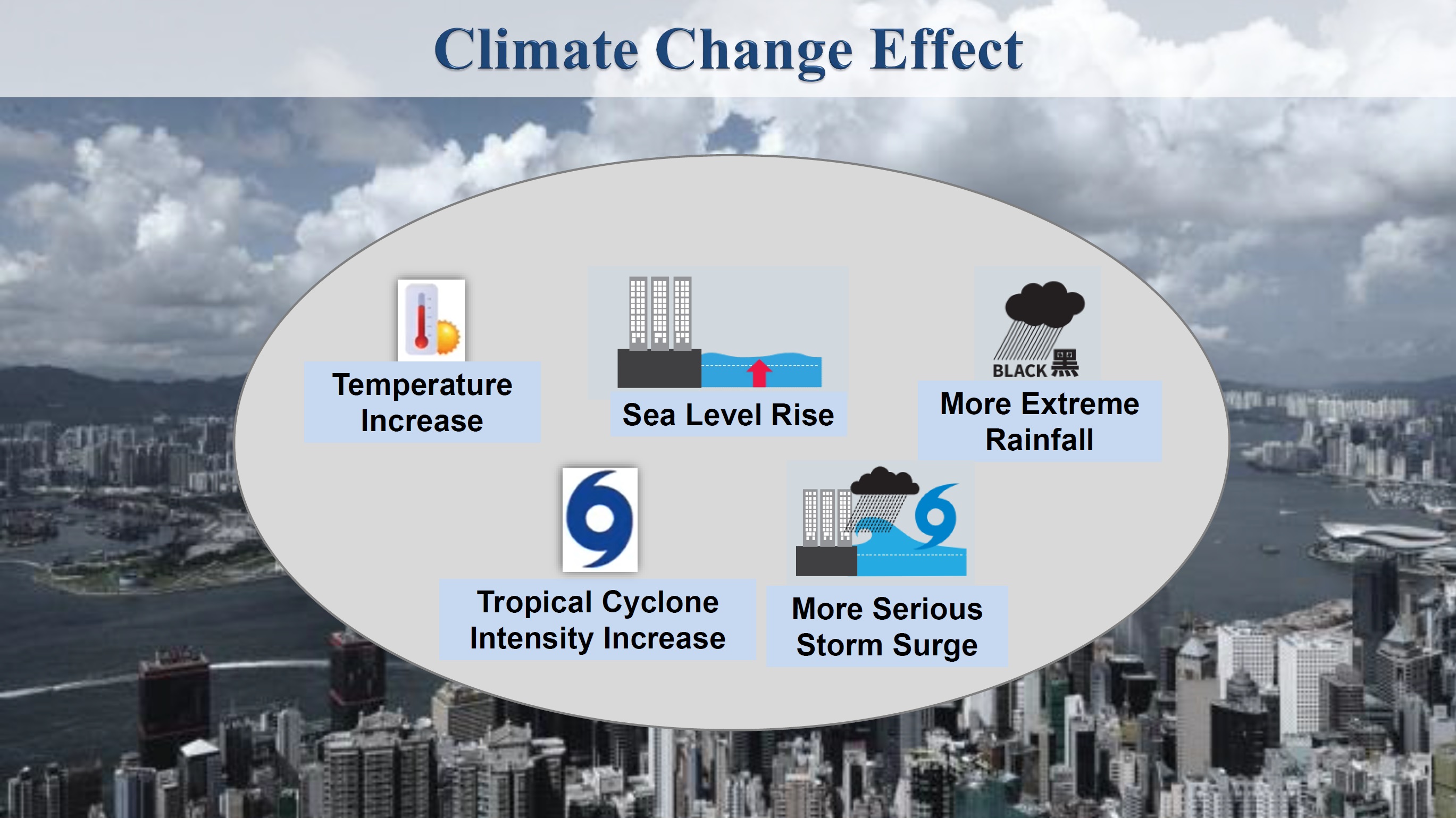
The Government attaches great importance to the capability of Government's infrastructure in combating climate change and extreme weather, and established in 2016 the Climate Change Working Group on Infrastructure (CCWGI) under the leadership of the Civil Engineering and Development Department (CEDD) to coordinate the efforts of the works departments in adapting to climate change. The CCWGI reviews and updates the relevant design standards for infrastructure in a timely manner as and when necessary with reference to the Sixth Assessment Report (AR6) progressively released in August 2021 by the United Nations' (UN) Intergovernmental Panel on Climate Change (IPCC). The CCWGI coordinates the works departments to strengthen infrastructures and to enhance their climate resilience. It also coordinates climate change studies, and share relevant experiences with public organisations, utility undertakers, Airport Authority and MTR, thereby enhancing the overall infrastructure resilience of our city.
To understand the potential implications of climate change on coastal structures in Hong Kong and ascertain the necessary updating of the current design standards, CEDD has completed the studies on "Frequency Analysis of Extreme Sea Levels" and "Projection of Tropical Cyclone Induced Extreme Winds under Climate Change" in 2022, and have also reviewed the IPCC AR6. Accordingly, CEDD has updated the Port Works Design Manual in August 2022 taking into account the study fundings and Hong Kong Observation's latest projections with progressive approach to enhance climate resilience.

Rise in sea level due to climate change in addition to cyclone storm surge may cause flooding in the coastal area
For infrastructure strengthening, CEDD has completed a consultancy study in 2020 to holistically examine the scope of enhancement works necessary for strengthening the resilience of existing critical infrastructure. The relevant government departments are formulating measures and implementation plans to enhance their critical infrastructure's resilience with reference to the recommendations of the study.
To enhance the capability of the coastal areas in responding to extreme weather and climate change, the CEDD engaged consultants who completed the Coastal Hazards Study "the Study" in end 2021. The Study has identified 26 coastal low-lying or windy residential areas with higher risks for formulation of improvement works and management measures to safeguard public safety. Considering the uncertainties in the range of possible future climate change development and global actions among nations on reducing carbon emissions, we adopt a progressive adaptive approach to formulate climate adaptation measures for coastal low-lying and windy locations. We are taking forward the various improvement works and management measures in an orderly manner,. More details of coastal enhancement can be found in the following link:
https://www.cedd.gov.hk/eng/topics-in-focus/index-id-39.html
Advisory Service
We provide advisory service on the projects that may involve marine works which includes examining submissions and commenting on land use proposals on government projects and private developments.
Maintenance of Marine Facilities
We maintain 110 beacons, over 130 km of seawalls and breakwaters, and over 320 piers and landings facilities (including public piers, as well as franchised and licensed ferry piers), etc.
We carry out routine inspections of marine facilities to ensure that they are safe for public use.
If the facilities are found in need of repair, we will arrange maintenance works, including concrete repair, fender repair and upgrading, and protective coating works to the marine facilities. To minimise disruption to ferry services and inconvenience to the public, we provide temporary berths or carry out the maintenance works after peak hours to maintain their operation.
The Port Maintenance Information System (PMIS), a computerized database with all the essential history and records of individual marine structures, has been implemented to cope with the growing demand for storage and prompt retrieval of information on the increasing number of marine structures we maintained. It enables us to respond to enquiries quickly and facilitate our planning, prioritization and scheduling of maintenance works.
The asset management of our marine facilities is also enhanced with the adoption of Building Information Modeling (BIM) technology, allowing us to plan preventive maintenance works and carry out repair works more efficiently.
Maintenance Dredging
We carry out regular maintenance dredging of fairways, anchorage areas, typhoon shelters and major river outlets to ensure navigation safety. Major maintenance dredging works have been carried out in Southern Fairway, North West Lamma Anchorage, Western Dangerous Goods Anchorage, Yau Ma Tei Typhoon Shelter, Shing Mun River and Tuen Mun River in recent years.
During our dredging works, we work closely with the Marine Department and the Environmental Protection Department to mitigate the marine traffic and environmental impacts. The dredged material will be disposed of at approved disposal sites for open sea disposal or confined marine disposal according to its contamination level.
